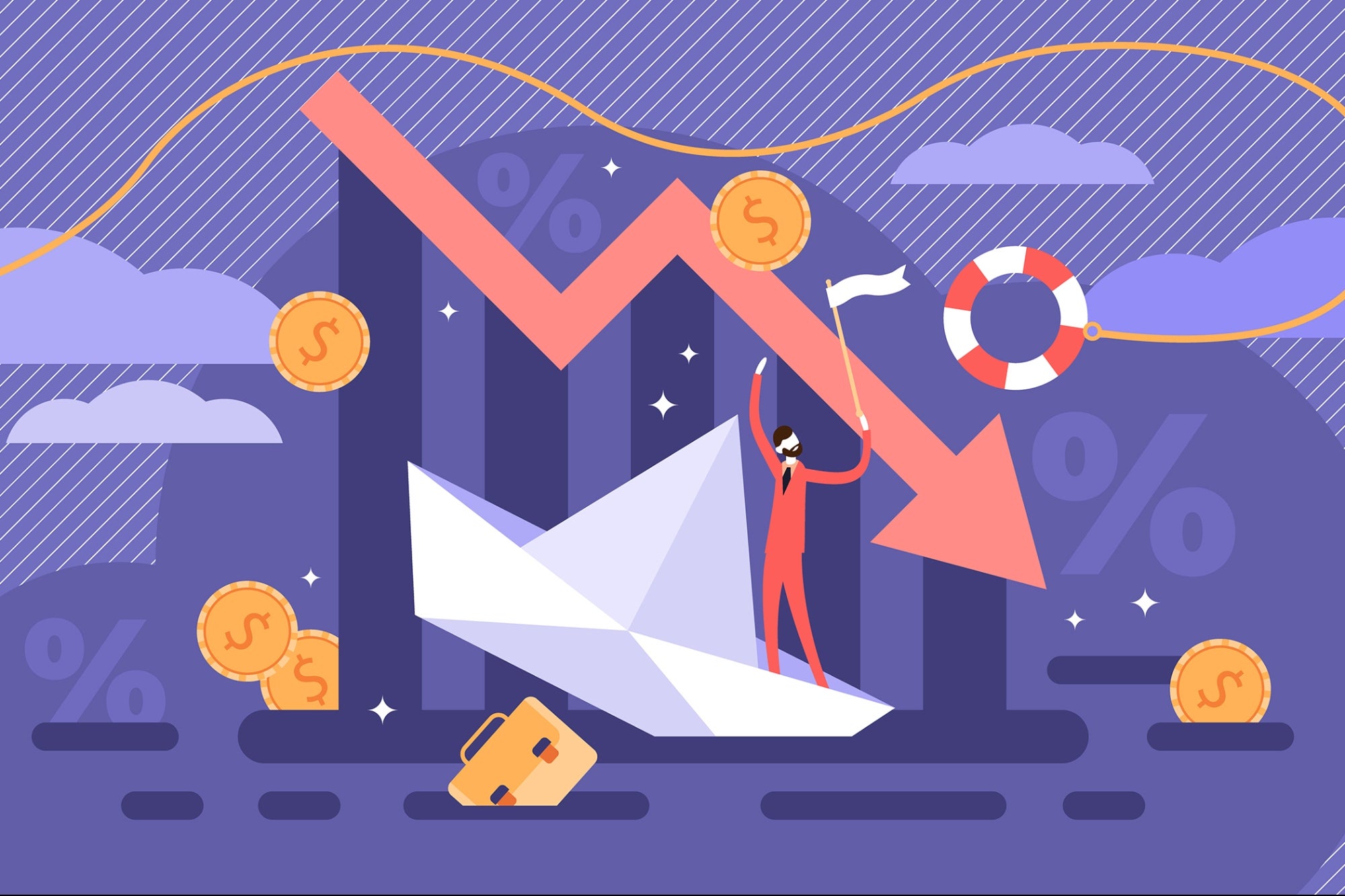How to Calculate Gross Profit
Need to know how much money your business brings in compared to how much you spend? Discover how to calculate gross profit in this explanatory guide.

By Entrepreneur Staff • Originally published
When you own a business, you need to understand how much money you make compared to how much you spend. That means you need to grasp profit margins.
But while it's crucial to know how to calculate basic product profit margins, you also need to know gross profit and how it affects your overall business operations. Read on for more information about calculating gross profit, the formula, and a few examples.
What is gross profit?
Gross profit is the total or net profit that a company makes after subtracting all the operating costs and administrative expenses associated with making and selling products, advertising its services, and really any other costs.
It's the takeaway cash a business is left with when accounting for all the money it had to spend to make that profit in the first place.
A company's gross profit is similar to total revenue or sales, as it deducts variable costs and ongoing operating expenses/fixed costs, such as production costs, that business owners must make.
Gross profit is a standard financial reportingmetric on a company's income statement. You can easily calculate Gross profit by subtracting the total cost of goods sold or COGS from your total sales revenue.
Combined with other metrics, gross profit (also called gross income or sales profit) can help you better understand your company's financial health and how much money you "really" made in a business quarter when all is said and done.
You can find gross profit calculators online or do the calculations yourself.
Click here to learn more about how small businesses can use income statements.
Why do you need to know gross profit?
Calculating gross profit is crucial because it tells you how efficiently you use your resources to deliver services or make products for your customers. If you have an excellentgross profit margin, it means you are maximizing your net profits or take-home cash.
If you have a poor gross profit margin, on the other hand, it means that your business operations cost a significant chunk of the money you make from your products or services.
Discovery of a poor gross profit margin can mean you need to look at your business operations and expenses to make some changes.
In the long term, understanding your gross profit margin lets you make the best decisions to support your company's health, growth and stability, especially in times of economic crisis.
For instance, if you don't have a lot of cash in the bank, but you think an economic recession is looming, you can look at your gross profit margin to determine the following:
- Whether your business will still make a profit if your sales slightly decline.
- What you can change to improve your profit margin is to start building up a savings nest egg to protect your business in the event of a crisis.
Once you know how to calculate gross profit, you should calculate it approximately once per week, once per month, and once per quarter for different levels of your business. The more often you calculate gross profit, the more up-to-date you'll be with the financial health of your enterprise.
Related: The 9 Biggest Financial Warning Signs
What is the gross profit formula?
Here's the gross profit formula in its simplest form:
- Gross profit = Net sales - Cost of Goods Sold (also known as COGS)
In the above formula, your gross profit is how much you make after deducting expenses to operate your business and sell your products. Meanwhile, net sales are the same thing as your revenue.
It's the total amount of money you make from selling products or services for a given period, like a weak or business quarter.
Lastly, the cost of goods sold or COGs is the direct cost your business pays to make its goods or services.
The cost of sales can include but is not limited to the following:
- Direct labor costs, such as the wages you pay your staff
- Marketing costs
- Product or material costs, including depreciation
- Shipping costs
- Manufacturing costs
- Storage costs
By considering these factors found on financial statements, you'll determine your business's net income and bottom-linecash flow.
How to calculate gross profit
Now that you know the gross profit margin formula, look at how you can calculate gross profit step-by-step.
Determine the cost of goods sold.
First, you need to determine the cost of goods sold. That means adding up all the costs and expenses associated with making your profits in the first place.
For example, say that you made $1000 in profit selling handmade decorations for people to place in their homes.
To make those products, you:
- Paid for the raw materials.
- Paid a website subscription fee and hosting fee to run your online store.
- Paid shipping for your products after customers place orders.
- Paid for PPC Google ads to bring people to your site.
Add up all of these costs to determine your overall COGS figure.
Determine revenue.
Next, determine the revenue you made from selling your products in the timeframe you wish to analyze.
For instance, if you want to know the gross profit you made in Q1 of 2022, you would add up all the revenue or profits you made in January, February, and March 2022.
Put it all together.
Once you have both numbers, you can plug them into the above formula and determine your gross profit.
Related: Gross Profit Margin and Markup
Gross profit example
Here are some examples of a gross profit margin so you can better understand this formula.
Say you run a small business selling clothing with custom designs you create on the computer. In Q3 of 2022, your small business made profits totaling $5600.
However, you still need to add up the cost of goods sold. To do this, you add up the costs of the materials to make your clothing, the software you use to create new designs, and the maintenance of your online store and website. Your COGS total $3200.
Here's an example of the gross profit margin formula in action.
- $5600 - $3200 = $2400
Therefore, your "real" profit is only $2400, not $5600. Now that you know this, you can determine whether you need to increase the price of your goods, decrease the money you spend making those goods, or do something else entirely.
You can also turn the gross profit into a percentage for easier understanding.
Take the above example with a gross profit of $2400. Divide $5600 by $2400; you get 0.4285, or approximately 43%.
In other words, you have a gross profit margin of 43%. That's not terrible, but it's not amazing, either.
Note that you can use the gross profit to determine your real profits for a quarter or the entire year. You can also use the gross profit for a specific product.
Say you have a single product line that made $2100 in Q3 of 2022. To make that product, you add up all of the costs and labor associated with only creating that product line. The COGS totals $900. Now plug those numbers into the formula:
- $2100 - $900 = $1200
Do the same steps described above to determine the percentage version of the gross profit margin. $1200 divided by $2100 is 0.571, or around 57%. That's a pretty decent profit margin for a single product line.
By analyzing the gross profit of specific products, you can determine your real best-sellers relative to how much money you spend to create products.
What constitutes a "good" gross profit?
A "good" gross profit margin allows you to make a tidy profit while fulfilling your customers' expectations.
More specifically, some studies indicate that retail businesses' average gross profit margin is around 53%. However, this can vary heavily depending on industry and product type.
For example, the average gross profit margin for Q4 of 2020 was 14% for automobile and truck manufacturers. Meanwhile, consulting services saw an average gross profit margin of 96% for the same timeframe.
Generally, the higher your gross profit margin, the better. A high gross profit margin means you take home most of the money you make from selling your products and services.
A low gross profit margin indicates that you spend most of the money you make, which can spell financial disaster for your business if you run into an unexpected financial hurdle.
What gross profit margins mean for your business
Gross profit is an important metric to understand how much money you make after deducting any costs or expenses associated with making and selling your products.
Calculate gross margin to understand your business's current finances better and make wise financial decisions in the future.
Check out Entrepreneur's other guides and articles for more helpful information to grow your business and professional knowledge.










